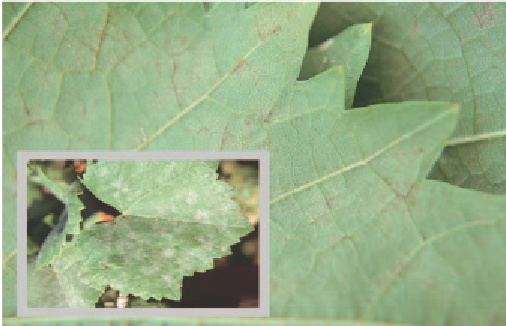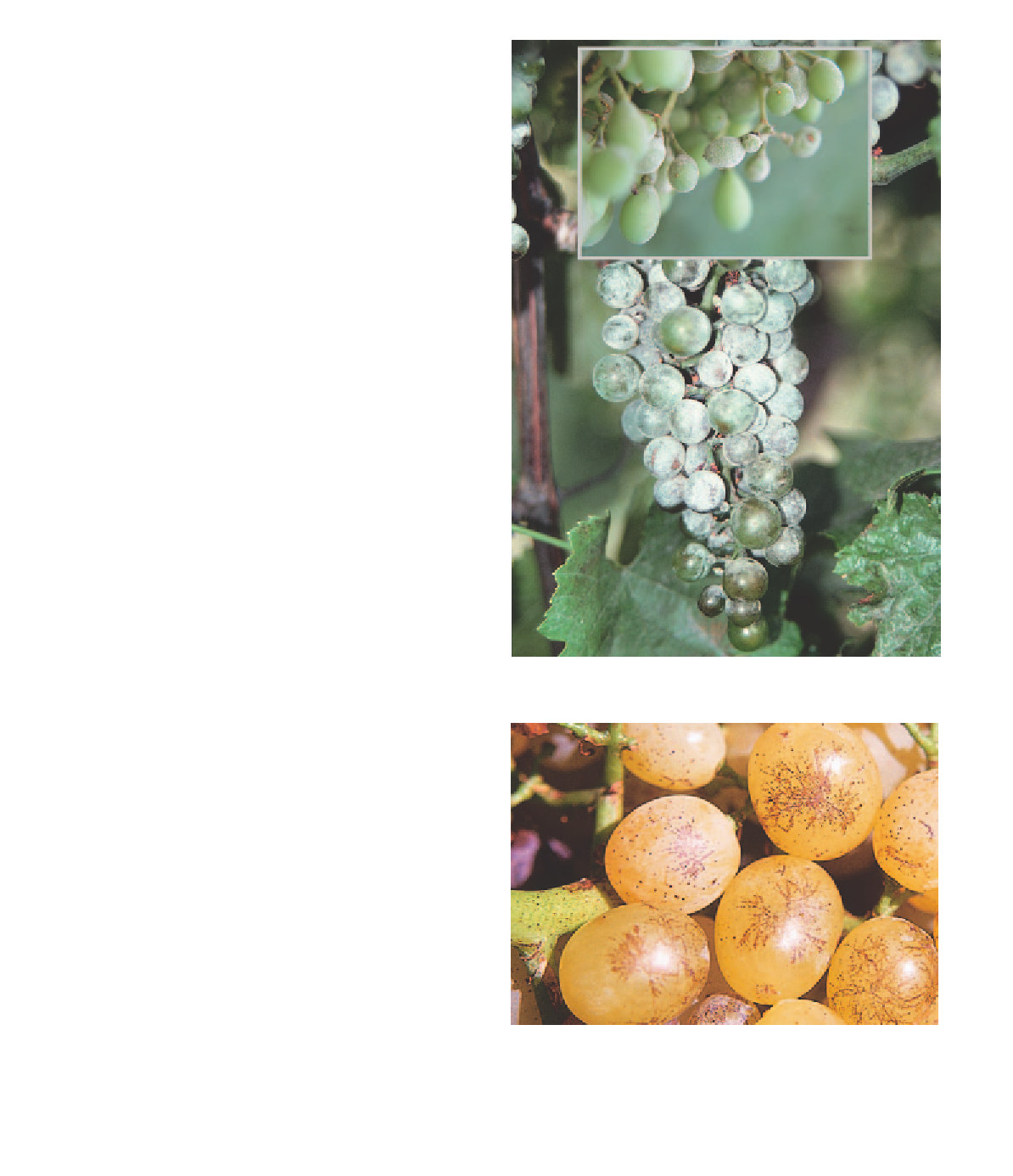Agriculture Reference
In-Depth Information
on the level of wet conditions that occur but can be serious
when bunches collapse as a result of infections that girdle the
rachis. Sometimes individual berries may rot late in the season
when the fungus grows from the pedicle into the berry.
Management
•
Use disease-free propagating material. Cut back canes
well beyond the visibly affected area.
Apply pre-infection (protectant) fungicides early in the
season, particularly in vineyards with a history of the
disease, and when cool, wet weather occurs.
•
POWDERY MILDEW
■
Cause
The fungus
Erisyphe necator
.
Symptoms
Powdery mildew can infect all green tissues of the
grapevine. The development of ash-grey to white powdery
growth on leaves, shoots and bunches is characteristic.
Leaf symptoms appear anytime from about two weeks
after budburst and are seen first as small yellow-green
blotches up to 10 mm in diameter on the upper surface
of leaves. Web-like fungal growth on the blotches may be
seen with a hand lens. As the blotches enlarge, ash-grey
powdery spores develop on the surface of infected
material. The blotches eventually merge and may cover the
leaf, which - if infected when young - becomes distorted
and crinkled, and dies.
Fig 9.26 Grapes infected with powdery mildew. The mildew can be
rubbed off (below).
Shoots develop small grey to oily black blotches that may
enlarge until severely diseased shoots are covered by a layer
of spores and become stunted.
Fig 9.27 Typical, web-like scaring shows where the powdery mildew
fungus has grown.
Infected berries and shoots develop an oily, web-like
pattern where the fungal threads are growing and the grey
to white spores may develop on young berries, bunch stalks
Fig 9.25 Powdery mildew on the upper (inset) and lower surfaces of
grape leaves. In some varieties the veinlets turn brown.












